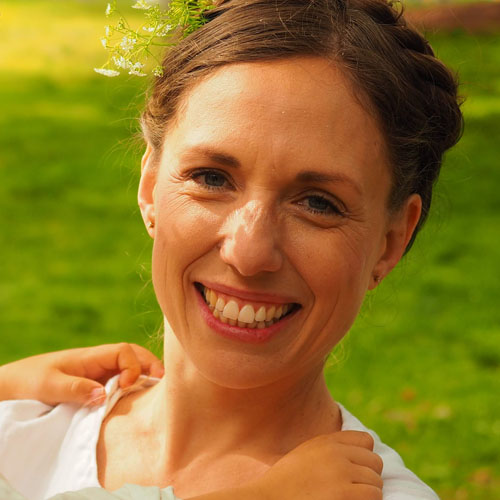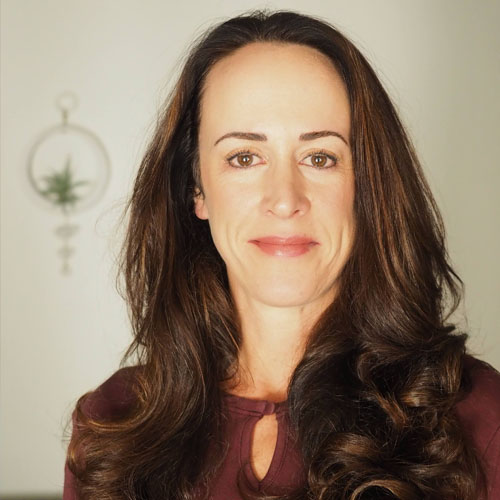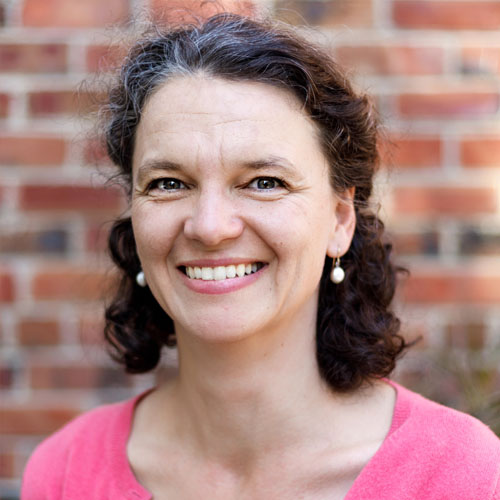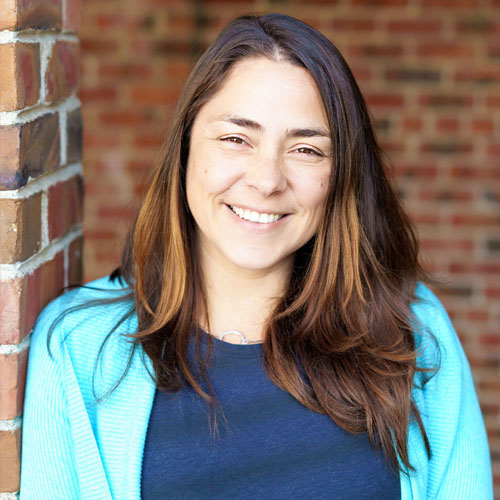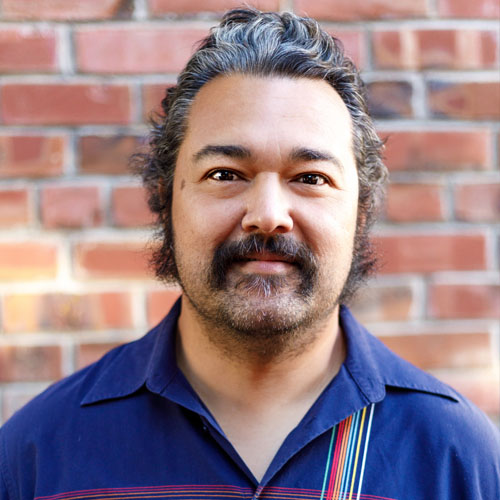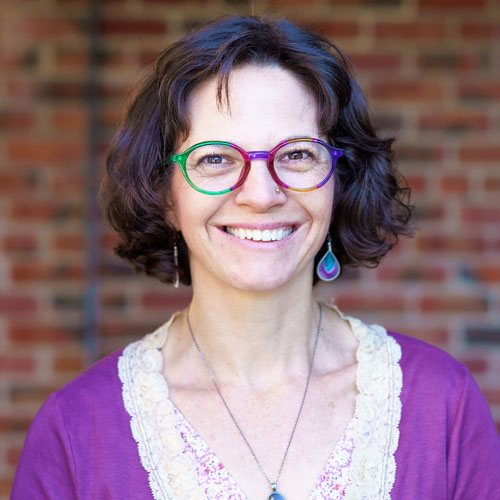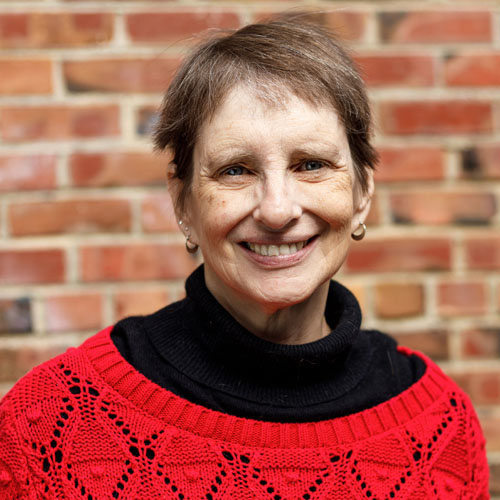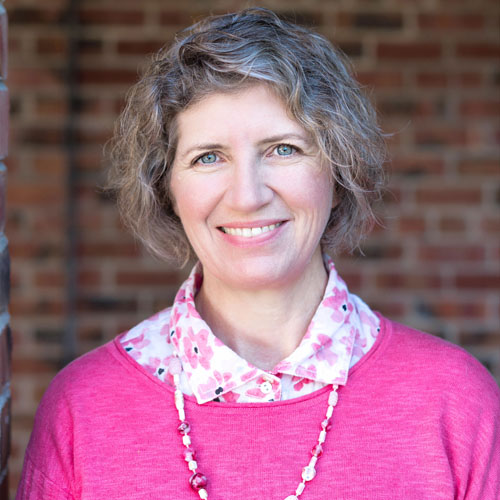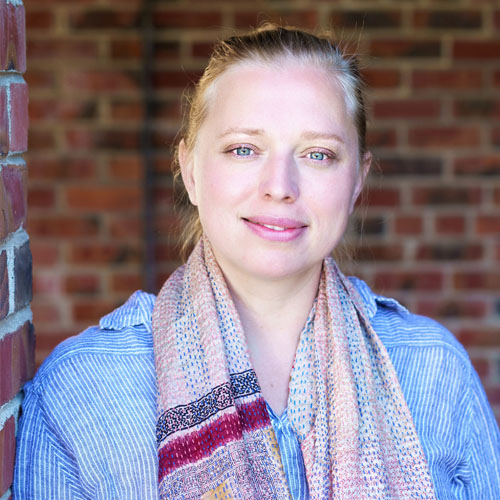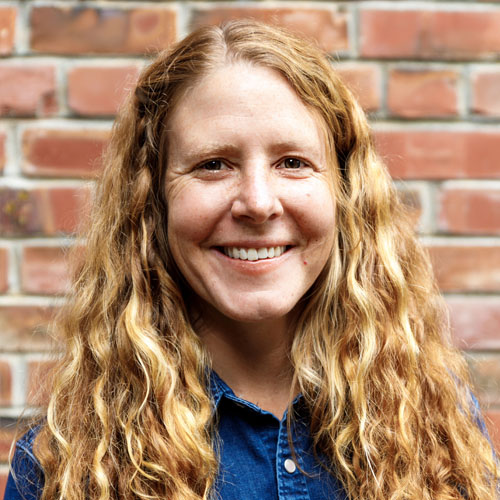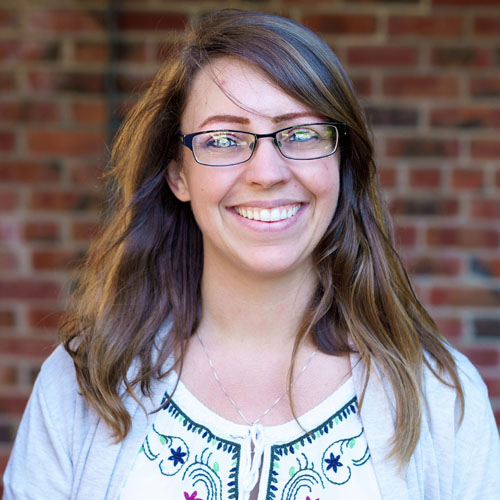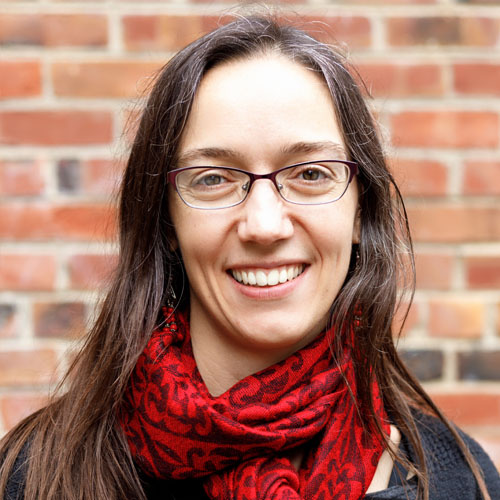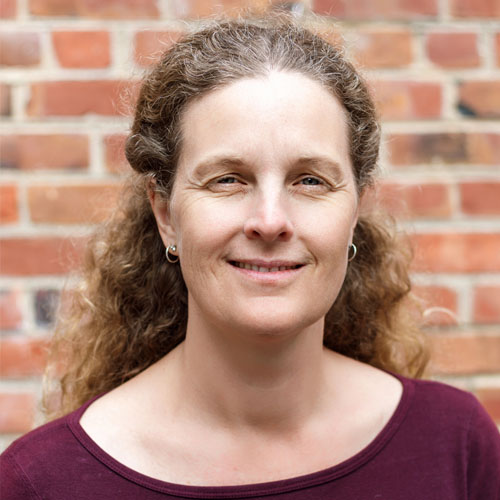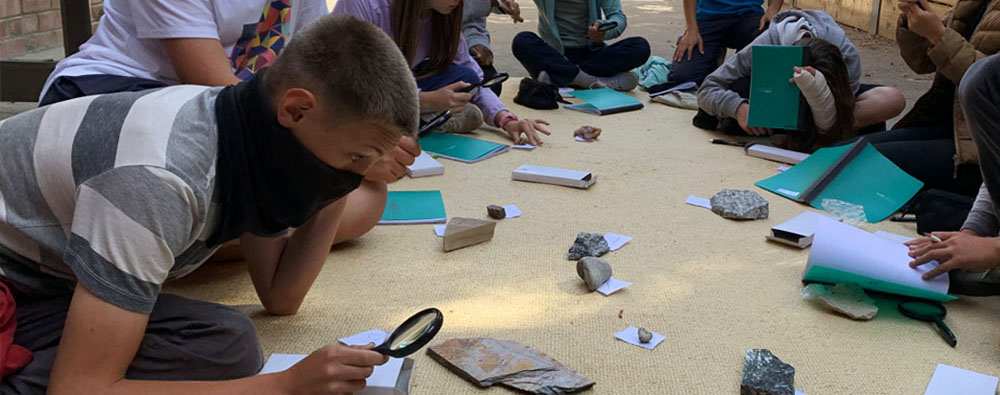
Frequently Asked Questions
BRWS Policies
Currious about our policies? Glance through our Parent Handbook.
What is the Waldorf curriculum?
The Waldorf curriculum is designed to meet the various stages of child development. Waldorf teachers are dedicated to creating a genuine inner enthusiasm for learning that is essential for educational success.
|
|
The following TEDx Talk further discusses the holistic approach to teaching at a Waldorf School.
Where does Waldorf Education come from?
Philosopher Rudolf Steiner formed the first Waldorf School in 1919, in response to the initiative of Waldorf-Astoria Cigarette Company founders Emil and Berta Molt who were looking for more humane values and new educational methods after the ravages of World War I.
By the start of World War II, 34 Waldorf schools had been founded – in Germany, Switzerland, Holland, England, Norway, Sweden, Hungary, Austria, and in the USA. The schools expressed diversity and celebrated common roots.
The outbreak of World War II resulted in the closure of most schools in Germany, Austria, and Hungary, and schools in Holland and Norway. In contrast, the number of such schools grew in Switzerland, England, and the USA during the war.
From 1945 to 1989 the Waldorf education movement consolidated and became a broadly disseminated, well-preserved educational model. In some countries, such as Germany, Holland and Scandinavia, Free Waldorf Schools were partially subsidized by the state as privately-operated facilities. In most countries, however, parents financed the Steiner/Waldorf schools and many new kindergartens were founded. The Waldorf movement continued to grow despite sometimes precarious economic conditions. In 1985, there were already 306 schools in 23 different countries.
The global popularity of Steiner/Waldorf education, even into the furthest corners of the earth, has continued until today. Interest in Waldorf education is evident in about half of all the world’s nations (about 100 countries), independent of language, religious affiliation, or political situation.
The Waldorf education movement, with about 1,100 schools and over 2,000 kindergartens around the globe, has become the largest free school movement in the world.
Hear our School Director, Jessica Prentice, talk briefly about this subject:
Why do parents choose Waldorf Education for their children?
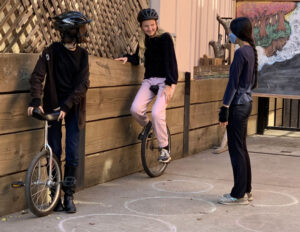 As every parent knows, each child learns and acts in their own unique way.
As every parent knows, each child learns and acts in their own unique way.
– Waldorf teachers work with your child according to their own gifts and challenges, nurturing and encouraging them just the right amount so that your child will want to be interested in and skilled at the many things they care about.
– Waldorf teachers know that education is not a competition and young students don’t need more pressure. Instead, they use the philosophy “the right thing at the right time,” meaning that they take the necessary time to discern how your child learns, what they need and when.
– Waldorf teachers are ready when your child is, and when they let you know how your child is doing, it is relative primarily to their own development and expectations, not just to the other students.
Research also shows that 94% of North American Waldorf graduates attend university and an incredible 50% attain a Masters or PhD. University professors speak very highly of the assertive and engaged Waldorf graduates in their classes.
Additionally, leaders and employers are not looking for people who can simply pass tests and follow orders. Waldorf graduates are successful because they are confident, creative thinking individuals with the courage to challenge the norms and to think freely and independently. Waldorf alumni go on to rewarding careers and continue to value learning, work, relationships and an ethical approach to their chosen path.
Finally, while Waldorf schools are largely independent from governments and therefore must charge tuition, they are not-for-profit and known for supporting many families that couldn’t otherwise afford to attend. This economic diversity, as well as gender, racial, religious diversity are the thread of the social fabric that Waldorf schools thrive on. Although Waldorf schools are not religious, the movement was born out of a spiritual idea that humanity has evolved due to the dynamic between spiritual wisdom and earthly work and that each child will also develop on this path before having their own capacity to advance it themselves. We celebrate the changing seasons, rites of passage, diverse cultural festivities and more human ways of working together in order to show children that we are all equal under the sun, we all develop wisdom, have something to share and are part of a much larger whole…and that is something worth celebrating.
The following article further discusses why parents choose Waldorf schools for their children.
Can my child join Berkeley Rose even though they didn’t start during preschool and/or after attending a different school?
Yes. We welcome children at any grade level.
Waldorf schools are known for providing a warm and nurturing environment in which every student is encouraged to reach their full potential. Any student changing schools, of course, encounters an adjustment period. Transitions can sometimes take an older child longer. However, because Waldorf Education speaks so directly to the children’s experience and developmental level, students assimilate comparatively quickly when they transition into a Waldorf school. Waldorf teachers are adept at managing developmental and academic differences. Inevitably, new students who are ahead in one area, will have catching up to do in other areas. Transition plans can be created to make sure students are caught up and competent within a few months time.
Here are some factors to consider and to anticipate when it comes to this type of transition:
New Classmates & New School Culture: Waldorf students tend to be very excited for a newcomer to join the class — a new student means a new friend; someone different and interesting that they get the chance to know! In the elementary years, the classroom is developed to become a small community with social-emotional learning embedded into the curriculum. Younger students transferring in may be relieved by the difference in handling classroom conflicts. Waldorf classrooms promote an environment of mutual respect and support through discipline that aims to awaken and educate rather than punish. Older students may be surprised at the ease of assimilation into such a tight-knit group.
The Individual: Consider your child’s uniqueness and how they deal with change in their lives when anticipating the experience of joining a new school. Don’t be afraid to reach out to us with questions. We encourage you to learn as much as possible about our school to help determine if BRWS is a good fit for your family. Joining a Waldorf school tends to be a wondrous experience for most families, with a vibrant community and comprehensive curriculum supporting each child.
The Grade: Typically, transferring into the Elementary School is a smooth transition with minor adjustments to the learning environment and more comprehensive curriculum. Children will make changes to approach their learning as non-competitive, embracing it in a personal way that makes the world truly meaningful to them. Children who transfer into a Waldorf school in the early grades usually are up to grade in reading, math, and basic academic skills. However, there is likely much to learn in bodily coordination skills, posture, artistic and social activities, cursive handwriting, and listening skills. Transferring into the Middle School may require some tutoring in musical instruments or world languages. Our experienced teachers will be able to recommend a thoughtful plan to help with the transition.
Technology & Media: A central aim of Waldorf Education is to stimulate the healthy development of the child’s own imagination. We believe children should be learning through movement and experiences. As with all things, using media should be limited and the balance of how much is appropriate depends on the age of the child. Waldorf values and emphasizes learning through direct interaction with one another as well as with teachers in exploring the world of ideas, participating in the creative process, and developing their knowledge, skills, abilities, and inner qualities.
Some new parents have also expressed concerns with regard to adhering to our media policies which is why our teachers work so closely in collaboration with our parents. You are not alone! If you have any questions or reservations about how limited media usage for your children could affect your lifestyle (and sanity!), please turn to us, our teachers and especially our supportive parent community who will share with you the joys and benefits, and will offer the strategies of making it happen – smoothly.
One Waldorf Class Teacher: Waldorf teachers aim to connect deeply with their students, with the Class Teacher ideally remaining with the same students from First through Eighth Grade. Healthy social development is especially dependent on fostering strong personal connections. This deep connection also supports a basic need of children for genuine authority and appropriate boundaries. If a teacher has a class for several years, the teacher and the children come to know and understand each other in a deep way. The children, feeling secure in a long-term relationship, are better able to learn. The interaction of teacher and parents also can become more deep and meaningful over time, and they can cooperate in helping the child. Problems between teachers and children, and between teachers and parents, can and do arise. When this happens, the teacher, the mentor and the teacher’s department (Early Childhood, Grades, Upper Grades) study the situation, involves the teacher and parents—and, if appropriate, the child—to resolve the conflict. A Waldorf class is something like a family. If a mother in a family does not get along with her son during a certain time, she does not consider resigning or replacing him with another child. Rather, she looks at the situation and sees what can be done to improve the relationship. In other words, the adult assumes responsibility and tries to change. This same approach is expected of the Waldorf teacher in a difficult situation. In almost every case the teacher must ask: “How can I change so that the relationship becomes more positive?”
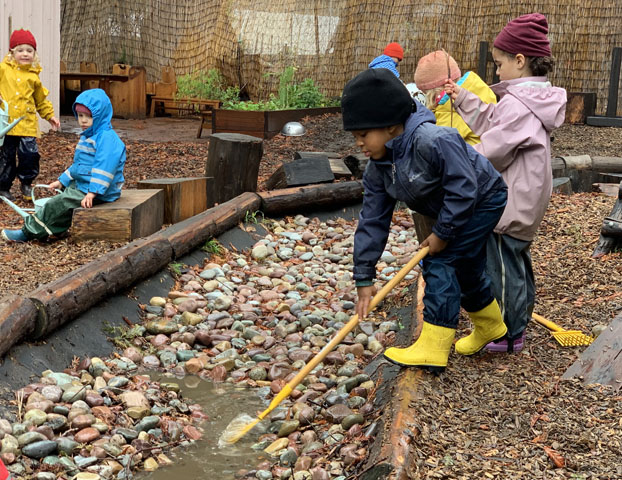
How does Berkeley Rose select students for admission?
Above all, we are focused on making sure Berkeley Rose is a good fit for the student and their family. We want to be able to meet the needs of the individual, meaning we acknowledge the times when Berkeley Rose can’t serve a student appropriately. The reality of being a private school striving to provide affordable tuition means that, outside of our highly qualified faculty and well-rounded daily curriculum, our resources have their limitations and Berkeley Rose may not be what every family needs and is looking for. As part of our application process, we invite prospective students and their parents to a meeting/interview then, if applicable, we invite the student to shadowing days in the grades, followed by a parent-teacher meeting to help determine if Berkeley Rose is a good fit.
Can my child join Berkeley Rose mid-year?
Yes, as long as there is an opening in the appropriate class. Please contact us so we can work with you.
Is Berkeley Rose a religious school?
No. Waldorf schools are non-sectarian and non-denominational. They educate all children, regardless of their cultural or religious backgrounds. The teaching method is comprehensive, and, as part of its task, seeks to promote the recognition and understanding of different world cultures and religions. Waldorf schools are not part of any church. They espouse no particular religious doctrine but certainly embrace the idea that there is a spiritual dimension to the human being, as well as to all life. Waldorf families come from a broad spectrum of religious traditions and interests.
Is Berkeley Rose similar to a Montessori school?
These two educational approaches began with a similar goal: to design a curriculum that was developmentally appropriate to the child, and to address the child’s need to learn in a tactile as well as an intellectual way. The philosophies are otherwise very different. Today, Montessori is known for its cognitive approach, while Waldorf schools are known for their whole-child approach.
- Waldorf schools offer a developmentally appropriate, experiential, and academically rigorous approach to education. They integrate the arts in all academic disciplines for children from preschool through twelfth grade to enhance and enrich learning. Waldorf education aims to inspire life-long learning in all students and to enable them to fully develop their unique capacities.
- Montessori is a child-centered educational philosophy where teachers serve as guides to each child’s educational progress. In Montessori programs the teacher’s job is to assist students in navigating materials and children work at whatever level they are working at without judgment or corrective actions.
How are academics taught in the Berkeley Rose early childhood programs (nursery and kindergarten)?
Berkeley Rose Waldorf School’s focus in our early childhood program is to allow for creative play to happen naturally as well as to include pre-academic skill-building activities through: hearing stories, singing, reciting verses and poems, playing with and manipulating natural materials, cooking and building.
Children at this age learn through experimenting, exploring, building, touching, and they engage as many of their senses as they can in playful tactile and multi-sensory ways.
Thoughtful and well crafted pre-academic skill-building activities build language skills, develop memory and attention, expand vocabulary and sound knowledge, nurture curiosity and love of learning. These are all very important steps and building blocks needed for reading, writing and mathematics.
Creative play is the best way for children to learn how to solve their own problems. It is also the most effective way to promote language skills (using proper tone of voice, eye contact, facial cues, hand gestures, body language) and build vocabulary. Through play children learn how to take turns, negotiate, state their argument, and defend their point of view. They discover that words can be powerful tools when working with others toward a shared goal. Through play children make sense of the world around them.
The introduction of traditional academics and its accompanying pressure at a developmentally inappropriate age (too early in childhood) may not be effective and can have negative consequences:
- Children losing (or never developing) a love of learning.
- Children feeling like (or being told that they are) failures, because they can’t do something that isn’t developmentally appropriate for them yet.
- Children who have been shown to have more energy than endurance athletes are being asked to sit still and focus, causing them to be fidgety, unfocused, and act out.
- Children can miss out on developing important social and emotional skills.
- Boys and Girls develop at different rates and in different ways.Bringing academic work too early is especially problematic for young boys.
- Children may not get foundational pre-academic skill-building that they need for future school success.
- Children will end up working more, but learning less.
The following TEDx Talk further discusses the issues that early academics can bring & the importance of play.
When does Berkeley Rose introduce reading?
 Our goal is to foster passionate readers who continue reading throughout their lifetimes. To that end, we introduce reading in a developmentally appropriate way, when students are more comfortable with the written word and fully ready to engage with it.
Our goal is to foster passionate readers who continue reading throughout their lifetimes. To that end, we introduce reading in a developmentally appropriate way, when students are more comfortable with the written word and fully ready to engage with it.
Pre-Academics are introduced in nursery and kindergarten.
Waldorf teachers then begin teaching reading in the first couple months of first grade by teaching consonants and vowel names and sounds through an artistic approach of drawing, painting, movement, and speech. This artistic, deliberate process engages the children with great interest, and by the end of first grade, children are writing and reading sentences and short texts. Students typically begin reading printed readers with their teacher during the second half of second grade. This thorough and artistic approach to teaching literacy has been proven to build a solid base for advanced comprehension and vocabulary skills in later years.
Does Berkeley Rose suggest limiting media?
“Waldorf teachers appreciate that technology must assume a role in education, but at the appropriate developmental stage, when a young person has reached the intellectual maturity to reason abstractly and process concretely on their own, which is at around the age of 14. Society might challenge this principle, as many young children are well able to complete sophisticated tasks on a computer; the Waldorf perspective is that computer exposure should not be based on capability but on developmental appropriateness. While many applaud adult-like thinking in young children, we observe that a child’s natural, instinctive, creative and curious way of relating to the world may be repressed when technology is introduced into learning environments at an early age.” ~ Excerpt from NYTimes Opinion, 5/2014, Author, Beverly Amico
A central aim of Waldorf Education is to stimulate the healthy development of the child’s own imagination. We believe children should be learning through movement and experiences. As with all things, using media should be limited and the balance of how much is appropriate depends on the age of the child.
Take a look at this great resource from Ben Klocek – Transforming Tech Habits
Is there technology in the Berkeley Rose classrooms?
Computers are incredible tools that save adults enormous amounts of work and time. Computers are not, however, the most desirable or effective medium for educating children in the elementary school.
Waldorf values and emphasizes learning through direct interaction with one another as well as with teachers in exploring the world of ideas, participating in the creative process, and developing knowledge, skills, abilities, and inner qualities. We begin a cyber civics curriculum in middle school. Technology as a tool begins in the Waldorf 9th grade curriculum.
During the 2020 stay-at-home order BRWS classrooms moved to distance learning with Google Classroom and Zoom. Even in distance learning our focus was on developmentally appropriate and meaningful experiences for children. We created learning activities, inspired by what children would experience at school, but with a manageable balance of more independent and creative work.
The following TEDx Talk further explore the relationship between media and children:
What qualifications do Berkeley Rose teachers have?
All of our Early Childhood Lead Teachers and Grades Class Teachers have either a Bachelor’s Degree or have completed Waldorf Teacher Training at an accredited Waldorf education institution. Most have completed both, and many of our teachers have further training, including various certifications in the realms of early childhood, play, therapy, eurythmy, story telling, and more. All of our teachers participate in ongoing training and development in Waldorf Education.
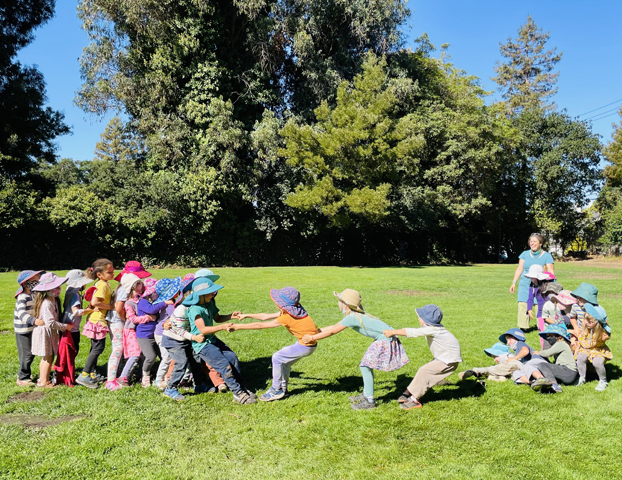
Do Berkeley Rose class teachers stay with their class for multiple years?
A Waldorf teacher in the grades typically remains with the same class for five to eight years. In this way, the teacher is better able to assess each individual’s development, needs, and learning style—and the children, feeling secure in this long-term relationship, are more comfortable in their learning environment.
Meaningful education depends upon a relationship of trust and respect between a student and a teacher, and equally important, between the teacher and the parents. The benefit of developing these long-term relationships is the ability to support the healthy growth of a child while encouraging the participation of parents.
What if a Berkeley Rose class teacher is not a fit for my child?
A Waldorf class is something like a family. Problems between teachers and children, and between teachers and parents, can and do arise. Our school typically works to resolve such problems through direct communication, conflict resolution or grievance procedures. With the goodwill and active support of the parents and the teacher concerned, our school makes the necessary changes needed to ensure the best situation for all concerned. At Berkeley Rose understanding the child’s needs and temperament is central to the teacher’s role and training. If problems should occur, the faculty as a whole work with the teacher and the family to determine and undertake whatever corrective action would be in the best interests of the child and of the class.
How can a Berkeley Rose class teacher teach all the subjects through eight years of elementary schooling?
The class teacher is not the children’s only teacher! Each day, subject teachers teach the children foreign language, instrumental music, eurythmy, handcrafts, games/sports and so on. The class teacher, with significant Waldorf Teacher Education, is responsible for the daily “main lesson” and one or two other course subjects. These teachers bring the main academics to the children, including language arts, science, history, and mathematics (in the lower grades), as well as painting, music, clay modeling, and other subjects. In Waldorf methodology, it is vital that a teacher be adept at awakening capacities and fostering the ability of children to think clearly and critically, to empathetically experience and understand phenomena in the world, as well as to distinguish what is beautiful, good, and true. The class teacher walks a path of discovery with the children and guides them into an understanding of the world of meaning.
Class teachers attend yearly trainings during the summer months with master teachers who help them to prepare curriculum for the next school year. In addition, Waldorf teachers are trained to teach children to see cause and effect in the world and perceive meaning in all things, so that they will be able to participate meaningfully in shaping their world as free human beings.
How do Berkeley Rose children fare when they transfer to other schools?
Generally, transitions to public schools, when they are anticipated, are not problematic. The most common transition is from an eighth grade Waldorf school to a more traditional high school, and, from all reports, usually takes place without significant difficulties.
Transitions in the lower grades, particularly between the first and fourth grades, can potentially be more of a problem, because of the significant differences in the pacing of the various curricula. A second grader from a traditional school will be further ahead in reading in comparison with a Waldorf-schooled second grader, however, the Waldorf-schooled child will be ahead in arithmetic.
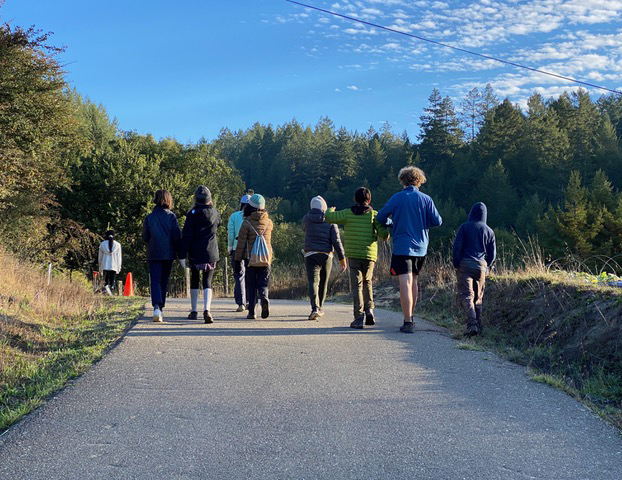
How does Berkeley Rose deal with kids that don’t get it, academically?
Waldorf schools hesitate to categorize children, particularly in terms such as “catching up” or “gifted.” A given child’s weaknesses in one area, whether cognitive, emotional or physical, will usually be balanced by strengths in another area. It is the teacher’s job to try to bring the child’s whole being into balance.
A child having difficulty with the material might be given extra help by the teacher or by parents; tutoring might also be arranged. Correspondingly, a child who picked up the material quickly might be given harder problems of the same sort to work on, or might be asked to help a child who was having trouble.
What does parent involvement look like at Berkeley Rose?
The key to improving student achievement is the involvement of parents or other family members in education. Parents are the first teachers and most significant adults in children’s lives. We encourage parents to strive to understand the principles of Waldorf education, create a home environment that supports what is taking place at school, and keep regular communication with your child’s Class Teacher.
Alongside your importance at home, parent participation is the lifeblood of the school! Parent involvement may look different for everyone and depends on backgrounds, experience, skills, interests, and available time. Some examples of parent participation include: volunteering as a class parent, assisting with special activities and projects, becoming a board member, as well as attending meetings including parent evenings, class meetings, all-school meetings, parent/teacher conferences, and parent council meetings.
Berkeley Rose only goes through 8th grade - where do students go after they graduate?
Our students go to a wide range of schools from public to private – even boarding schools!
Our Graduates have been accepted to and/or have attended:
High Mowing School
Latitude High School
Maybeck High School
Marin Academy
Oakland School for the Arts
Saint Mary’s College High School
The Athenian School
The Bay School of San Francisco
The San Francisco Waldorf School

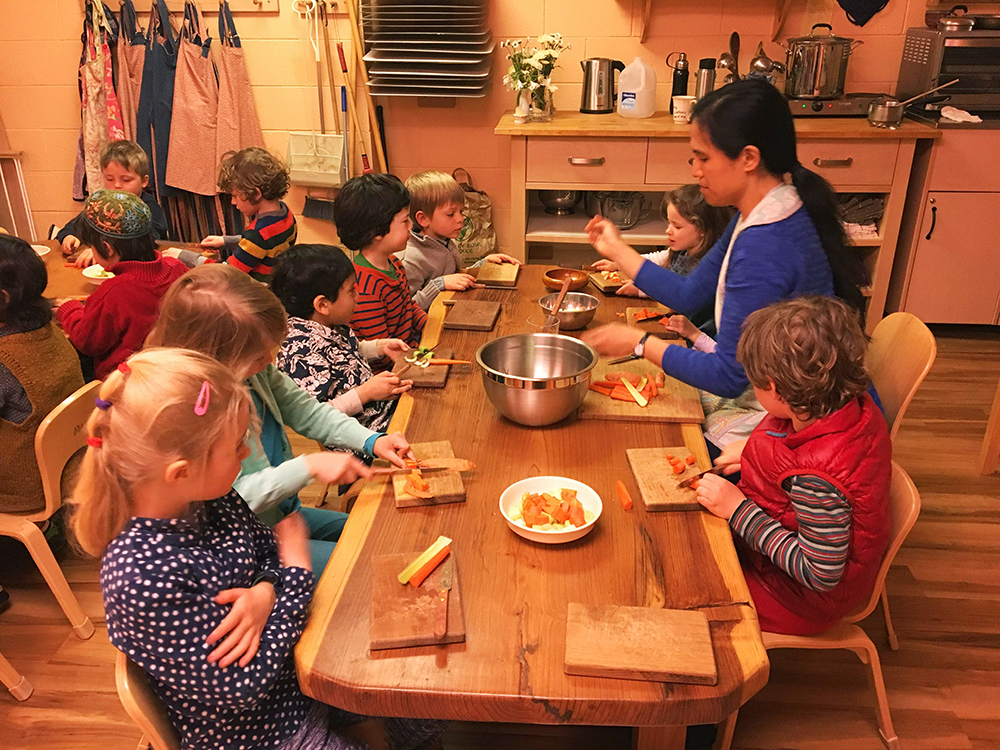 Preschool and Kindergarten
Preschool and Kindergarten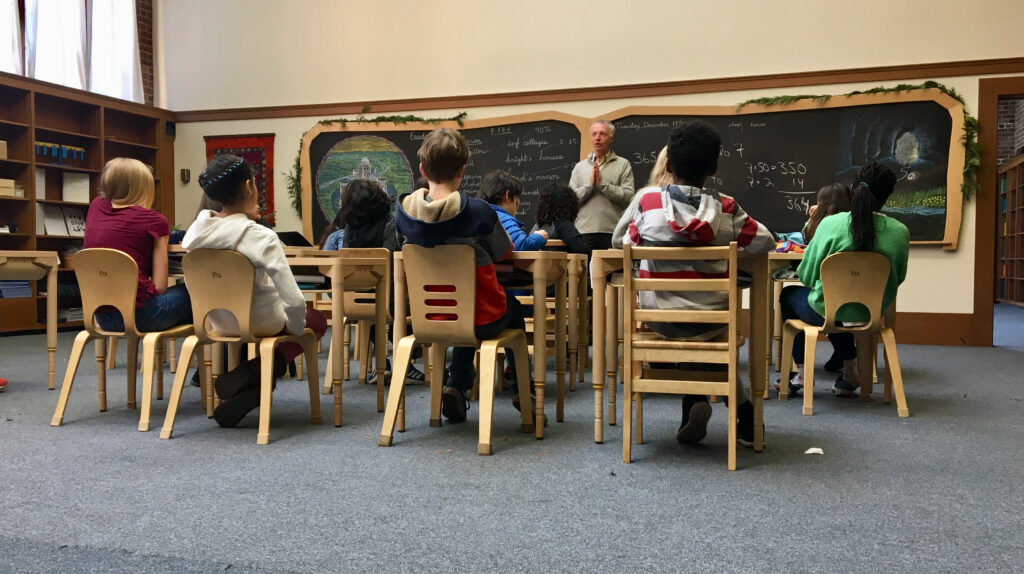 Elementary and Middle School
Elementary and Middle School